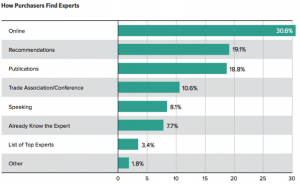Live chat is a powerful sales tool, so don’t confine it to only your web page. Columnist Tamar Weinberg explains how to make it a part of your multi-channel marketing strategy .
 Giving your site visitors the option to chat with a sales representative is a key driver in increasing revenues. If you don’t yet have live chat set up on your business website, then you’re missing out on major impact potential, both in terms of conversion optimization and loyalty marketing.
Giving your site visitors the option to chat with a sales representative is a key driver in increasing revenues. If you don’t yet have live chat set up on your business website, then you’re missing out on major impact potential, both in terms of conversion optimization and loyalty marketing.
Research indicates that 85 percent of US online consumers like to give repeat business to e-commerce companies that resolve their issues quickly with live chat. If that’s not enough to convince you, another study from Forrester shows that 44 percent of online consumers say having live chat as an available option while making an online purchase is one of the most important features a website can offer.
However, sales and service chat ideally shouldn’t be relegated to your hosted web pages. There’s no reason why your multi-channel marketing strategy should exclude live chat.
Research from Fluent shows customers who are exposed to brand messaging and interactions through a larger number of media channels make purchases from their favorite retailers, both online and in-store, more often. Some 62 percent of respondents who engaged with their favorite retailers across 10 or more channels say they made purchases at least once a week, while 49 percent say they buy from their favorite multi-channel brands online at least once a week.
Integrating the power of live chat across your brand’s omni-channel experience allows your business to keep leads and customers happy and your revenues flowing.
Develop a multi-channel conversation strategy
Adopting real-time, social media-driven interaction as a central aspect of your multi-channel marketing program isn’t going to happen overnight.
Take some time to develop a strategy that enables you to reach the lion’s share of your audience in as many places as possible — within reason, that is. The last thing you want to do is wave the flag that you’re available to talk shop any time, anywhere, and then reply to queries extremely slowly.
To help develop your strategy, consider:
- What channels are your target customers frequenting the most?
- What will you need to do to maintain a thriving presence on all of these platforms?
- How do you plan to integrate all of these channels to create a cohesive customer experience?
If your customers aren’t on Twitter, then don’t focus on creating much of an organic presence there. At the same time, even if your customers love Twitter, don’t neglect other channels to focus solely on Twitter.
Also consider what types of content drive the most sales for your specific audience. Should you be promoting a gated e-book as a magnet for lead capture? Can you close a lot of deals by hosting a sales-oriented webinar? Different verticals and media are best for different content formats.
Take a look at how General Electric (GE) has created a cohesive, conversational strategy across multiple social channels, one which supplements the live chat, phone, email and snail mail options that their support department maintains. They’ve got a relatively “boring” brand, but they’ve humanized their brand for great success on social media.
- Vine — GE went live here just one day after the app launched. Since then, they’ve created a variety of DIY and stop-motion videos. The brand is no longer active on Vine, but that’s likely because they made an adjustment to their strategy in accordance with how their audience responded. It shows agility, which a sound strategy always needs.
- Instagram — Here they go beyond their refrigerator and light bulb manufacturer status to show turbines, factories and trains. These posts consistently draw extremely high levels of engagement, and the conversation emanates from there.
- Twitter — GE shares infographics, reports and photos to educate their audience. They take time to answer questions — and to thank their most engaged community members. A large portion of their tweets are replies to tweets from others.

Leverage technology for cross-channel success
Buyers have questions, and if you can capture their contact information and promise to follow up with them, or answer their question immediately, you’ll see increased sales conversions.
But individuals have different preferences when it comes to communication channels. Giving your customers the choice of where they want to chat with you is a branding win, simply because they get to choose the option that’s most convenient for them. It also tells your customers that you’re invested in meeting their needs, which is a critical part of building customer loyalty.
Today’s tech makes it possible to integrate live chat across all of your primary media channels. You can even make it all work together holistically, using a centralized dashboard for multi-channel chat management that also tracks onsite activity, measures conversions and pushes interaction and browsing data to your customer relationship management (CRM) software.
With a tool like Bontact, you can talk to your consumers anywhere they are, any time they want and on any device. Since customers today want to be in control of their own product discovery experiences, it’s important to give them these choices.
Your website visitors can start a chat with you on your site and then choose to move the conversation to a different channel. They can request callbacks via phone or Skype, and they can discuss solutions with you on Facebook Messenger — or even SMS. As such, you can expect higher customer satisfaction and conversation rates.
Safeguard consistency in your messaging
For your multi-channel approach to be effective, messaging with consumers must be consistent, regardless of the channel. Establishing standards is easy when you have visibility into prior customer interactions across channels. Integrate all your enterprise systems whenever possible to capture and store customer data.
Messaging should be adjusted according to the platform it’s meant to appear on. Obviously, the 140-character limit on Twitter is more restrictive than a WhatsApp thread, for example, and photos on Instagram and Pinterest are different beasts entirely.
When developing your strategy, consider how you can create and reuse various content assets across all your channels — social media and beyond. Following GE’s example, you can see how many concepts are adapted and repurposed for each network, yet carried through the consistent messaging of innovation and humanization.
How can you do the same for your business, while also factoring in things like your email marketing and website user experience?
Don’t make them talk
Research shows that the average American millennial interacts with customer service 65 times per year, and 33 percent of them would rather clean a toilet than speak to a customer service agent; 26 percent would rather change a dirty diaper, and 23 percent would rather engage in some form of physical labor.
For many, speaking on the phone is an intolerably archaic anachronism. If we were to equalize all communication options in terms of ease of use and privacy, customers would consider increasing their use of text by 367 percent, and chat by 250 percent.
The takeaway here is, keep your leads happy and in control of how they interact with you.
Marketing Land – Internet Marketing News, Strategies & Tips
(93)
Report Post










